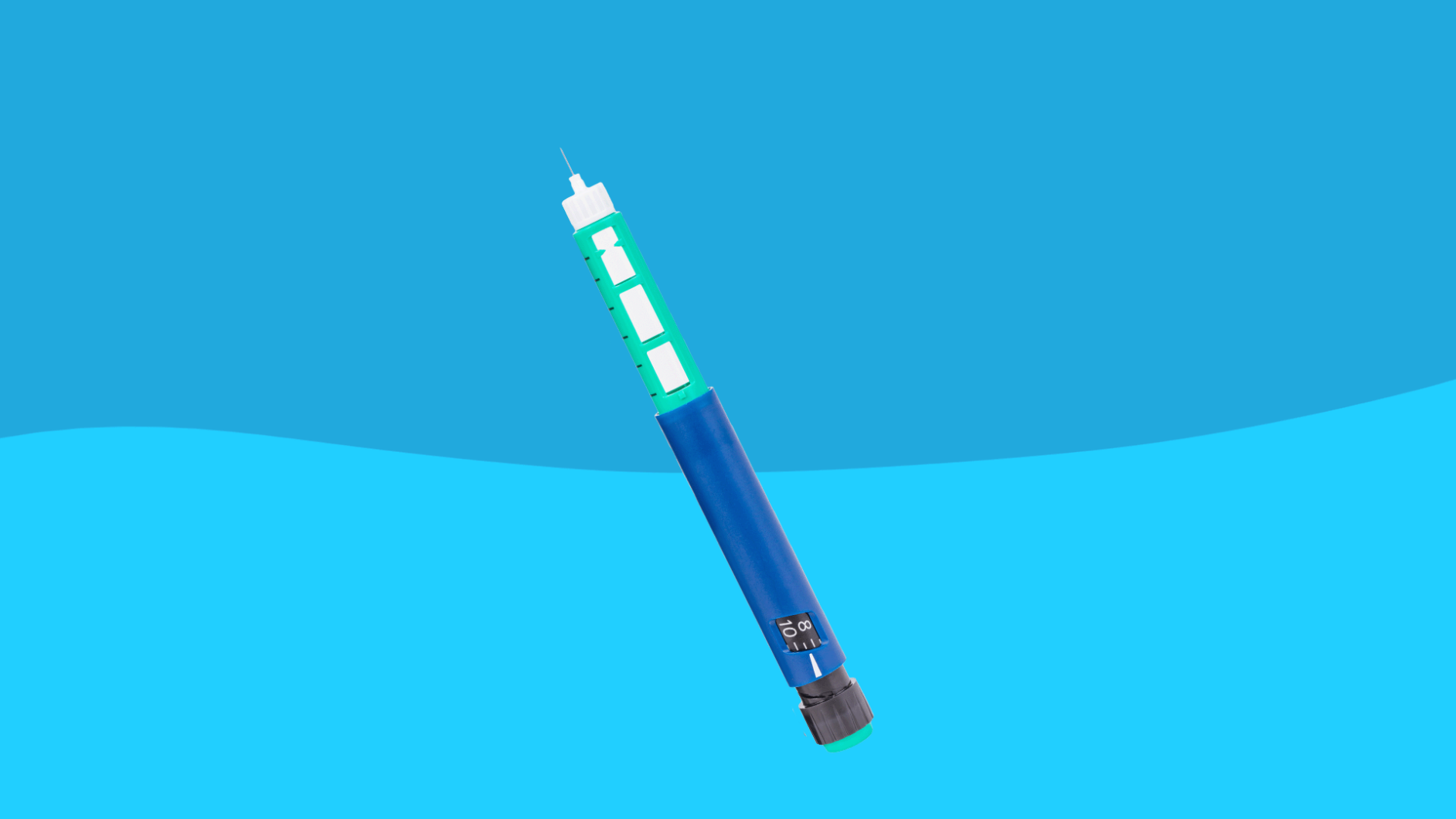Key takeaways
Ozempic must be injected once per week on the same day each week, but there is flexibility in terms of what time of the day you take it.
Although some people prefer to take Ozempic in the evening so that they can sleep through potential side effects like nausea, it’s fine to take it earlier in the day as well.
Most people find that Ozempic side effects decrease the longer you are taking Ozempic and your body adjusts to the medication.
You don’t need to time Ozempic around mealtimes, though if you are prone to nausea after taking Ozempic, you may want to eat bland foods around the time you take Ozempic.
Ozempic is one of three medications approved by the Food and Drug Administration (FDA) with the active ingredient semaglutide. Currently, Ozempic is FDA-approved for adults with Type 2 diabetes. It’s a subcutaneous injection (injected under the skin) and is used in conjunction with diet and exercise to help control blood sugar. Ozempic is made by the pharmaceutical company Novo Nordisk. Because Ozempic is a glucagon-like peptide-1 (GLP-1) receptor agonist, it can increase feelings of fullness and decrease appetite. Many people lose weight while taking Ozempic, and the medication is often prescribed off-label as a weight loss drug.
Ozempic is a type of medication that needs to be injected. If you are new to taking Ozempic, you probably have questions about how to inject it, including the best time to inject Ozempic. Thankfully, the rules are fairly simple: Ozempic should be injected once a week. You can pick any day of the week that is most convenient for you, and inject Ozempic every week on the same day each week. However, you can choose any time of day on that day. For example, if Monday is your injection day, you will inject Ozempic every Monday, but you can administer the injection any time of the day each Monday.
Read on for some expert tips on the best time to inject Ozempic, how to time Ozempic around mealtimes, and other tips for creating an Ozempic injection routine that works for you.
Ideal time for Ozempic injection
The FDA prescribing information for Ozempic is to administer the injection once per week, at any time of day. Healthcare professionals typically prescribe an initial dose of 0.25 milligrams (mg) weekly before increasing it to 0.5 mg weekly after four weeks. The dose may be increased further—your healthcare provider will advise you of a dosing schedule to follow. You can inject Ozempic into your thigh, upper arm, or stomach—and rotate sites, meaning you should use a different site to inject Ozempic each week.
So, when is the best time to take Ozempic, exactly? There is a lot of leeway when it comes to when to use your Ozempic pen, says Thaïs Aliabadi, MD, OB-GYN and founder of Trimly. “I recommend that my patients inject when it is convenient for them,” Dr. Aliabadi says. The key is consistency. “So if you inject on Saturday, you will always inject on Saturday,” she explains. “It doesn’t have to be the exact same time of day, but it does need to be the same day of the week.”
Sometimes, Ozempic can cause unpleasant side effects, especially when you first start taking it and your body adjusts. The most common possible side effects of Ozempic are nausea, diarrhea, and stomach pain. Sulagna Misra, MD, BCMAS, internal medicine physician, obesity medicine specialist, and founding physician at Misra Wellness, has some advice for managing these initial side effects.
Dr. Misra recommends patients take their first dose on a weekend or when they don’t have obligations to leave the house. That way they can rest at home in case gastrointestinal issues like nausea, vomiting, abdominal discomfort, diarrhea, or constipation occur—or if they have any other side effects such as fatigue.
Morning injections
Again, it’s really up to you in terms of when in your daily routine you take Ozempic. For some people, using their Ozempic pen first thing in the morning is helpful, so that they can get it out of the way and not have to remember to take it later.
One of the potential side effects of Ozempic is nausea, and some people prefer to wait till later in the day to take Ozempic so that they don’t experience nausea as they go about their day. But there are ways to minimize nausea, so don’t rule out taking Ozempic in the morning if that’s your concern.
“Generally speaking, avoiding greasy, spicy, and sugary foods and drinks around the time of injection is recommended,” Dr. Aliabadi says. “I always tell my patients to listen to their body. If they get nauseous from a certain food they ate or a drink, they need to make a mental note of it.“
Night injections
Many people end up preferring to use their Ozempic pen in the evening so that any side effects are felt overnight and not around meal times, explains Johnny Franco, MD, a board-certified plastic surgeon and founder of Austin Plastic Surgeon. But Dr. Franco also shares that this tactic is usually mostly helpful when you first start taking Ozempic; after a while, your body will adjust and the issue of nausea will be less of a concern.
“Due to the medications’ extended half-life, approximately seven days, patients eventually reach a steady state,” Dr. Franco says. “At this point, the dosing becomes more consistent, and patients experience fewer peaks and valleys in medication effects.” Imagine the levels of medicine in your body as a straight, steady line rather than wavy lines.
Dr. Misra has taken Ozempic herself and also usually recommends patients start out taking Ozempic at night. “I have personal experience with these medications and I always recommend if you have intolerable side effects to inject at night so you hopefully sleep through most of them,” she shares. That being said, Dr. Misra emphasizes that people usually tolerate the injection similarly, whether they take it in the morning or evening.
Ozempic and meals
What about mealtimes? Is it necessary to time the injections around when you eat?
“Semaglutide medication, such as Ozempic, doesn’t need to be taken at specific meal times,” Dr. Franco says. Ozempic is injected once weekly, but it has a long half-life. This means that it remains in your system for a significant duration, and its impacts are felt throughout the week, rather than in a particular time period. As such, it shouldn’t interact with a specific meal you’ve eaten.
This is different from certain other medications commonly prescribed for diabetes, Dr. Franco explains. “Unlike treatments like insulin, which require timing around meals, the goal [of Ozempic] is to establish a steady state in the body over time. This steady state helps in reducing appetite and hunger consistently, contributing to lifestyle changes that decrease overall calorie intake and enhance overall weight loss.”
Other important information about Ozempic
Ozempic has a boxed warning, also called a black box warning, the most serious warning required by the FDA. The warning states that in animal studies, semaglutide causes thyroid C-cell tumors. It is not known whether Ozempic causes thyroid tumors in humans. You should not take Ozempic if you have a personal or family history of medullary thyroid carcinoma, or if you have Multiple Endocrine Neoplasia syndrome type 2. People who take Ozempic should be alert to symptoms of thyroid tumors such as a lump in the neck, hoarseness, trouble breathing, or trouble swallowing.
In rare cases, serious allergic reactions may occur. People with symptoms of an allergic reaction should get emergency medical help. Symptoms may include hives, trouble breathing, or swelling of the face, lips, tongue, or throat.
Other serious adverse reactions may include:
- Pancreas problems
- Diabetic retinopathy complications
- Hypoglycemia (low blood sugar)
- Kidney problems
- Gallbladder problems
Before you take Ozempic, tell your doctor about all of your medical conditions and medical history. Also tell your doctor about all the medications you take so they can check for drug interactions.
Tips for remembering to inject Ozempic
Ozempic only needs to be administered once per week, and experts say that most people generally don’t forget to take their weekly dose. “It is so rare that someone forgets,” Dr. Misra says.
If you do miss a dose and it is within five days after the missed dosed, administer Ozempic as soon as you remember. However, if it has been more than five days, skip the missed dose and take the next dose on the regularly scheduled day. Either way, resume your once-weekly schedule.
According to Dr. Aliabadi, some people like to time their injections on the weekend, if they have a busy work week. They may also want to do this if they experience nausea along with their injection, so they can take it easy after the injection. “We suggest patients add it to their calendar as a weekly reminder, but frankly this is not a big challenge because patients are excited to stay on track with their goals,” Dr. Aliabadi says.
Dr. Franco has used semaglutide and GLP medications as part of his own weight loss journey. “Establishing a consistent routine has been crucial for me, designating a specific day each week for medication administration,” he shares. “Keeping the medication prominently placed in the refrigerator, within easy reach, further aids in remembering to take the medication.”
As the FDA notes, the best place to store Ozempic is in the refrigerator at a temperature between 36° F and 46° F. It shouldn’t be stored in the freezer, and you shouldn’t use Ozempic if it’s been frozen. Once you use an Ozempic injector pen, you can store it in the refrigerator or at room temperature (59° F to 86° F) for up to 56 days. Always keep the pen cap on when you’re not using it. Never take Ozempic past its expiration date. Be sure to dispose of the needle in a sharps container, and never share your pen or needles with anyone else.
If you have further questions, including the best time to inject Ozempic for your individual health needs, please don’t hesitate to reach out to your healthcare provider for professional medical advice.
Sources
- Public interest in the off-label use of glucagon-like peptide 1 agonists (Ozempic) for cosmetic weight loss: A Google Trends analysis, Aesthetic Surgery Journal (2023)
- Ozempic label, Food and Drug Administration (2023)











